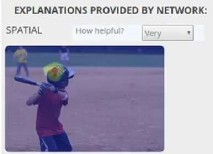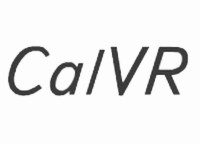From Immersive Visualization Lab Wiki
Contents
- 1 Current Projects
- 1.1 Helmsley (Larry Smarr, Jurgen Schulze, 2018-2021)
- 1.2 XAI (Jurgen Schulze, 2017-2021)
- 1.3 DataCube (Larry Smarr, Jurgen Schulze, 2018-2021)
- 1.4 Catalyst (Tom Levy, Jurgen Schulze, 2017-2019)
- 1.5 CalVR (Andrew Prudhomme, Philip Weber, Jurgen Schulze, since 2010)
- 2 Older Projects
|
Current Projects
Helmsley (Larry Smarr, Jurgen Schulze, 2018-2021)
XAI (Jurgen Schulze, 2017-2021)
 |
The effectiveness of AI systems is limited by the machine’s current inability to explain their decisions and actions to human users. The Department of Defense (DoD) is facing challenges that demand more intelligent, autonomous, and symbiotic systems. The Explainable AI (XAI) program aims to create a suite of machine learning techniques that produce more explainable models, while maintaining a high level of learning performance (prediction accuracy); and enable human users to understand, appropriately trust, and effectively manage the emerging generation of artificially intelligent partners. This project is a collaboration with the Stanford Research Institute (SRI) Princeton, NJ. Our part is the development of the web interface, as well as in-person user studies, for which we recruited over 100 subjects so far.
Publications:
- Alipour, K., Schulze, J.P., Yao, Y., Ziskind, A., Burachas, G., "A Study on Multimodal and Interactive Explanations for Visual Question Answering", In Proceedings of the Workshop on Artificial Intelligence Safety (SafeAI 2020), New York, NY, Feb 7, 2020
- Alipour, K., Ray, A., Lin, X, Schulze, J.P., Yao, Y., Burachas, G.T., "The Impact of Explanations on AI Competency Prediction in VQA", In Proceedings of the IEEE conference on Humanized Computing and Communication with Artificial Intelligence (HCCAI 2020), Sept 22, 2020
|
DataCube (Larry Smarr, Jurgen Schulze, 2018-2021)
Catalyst (Tom Levy, Jurgen Schulze, 2017-2019)
CalVR (Andrew Prudhomme, Philip Weber, Jurgen Schulze, since 2010)
 |
CalVR is our virtual reality middleware (a.k.a. VR engine), which we have been developing for our graphics clusters. It runs on anything from a laptop to a large multi-node CAVE, and builds under Linux, Windows and MacOS. More information about how to obtain the code and build it can be found on our main CalVR page. We also wrote a paper on CalVR, and gave a presentation on it. |



